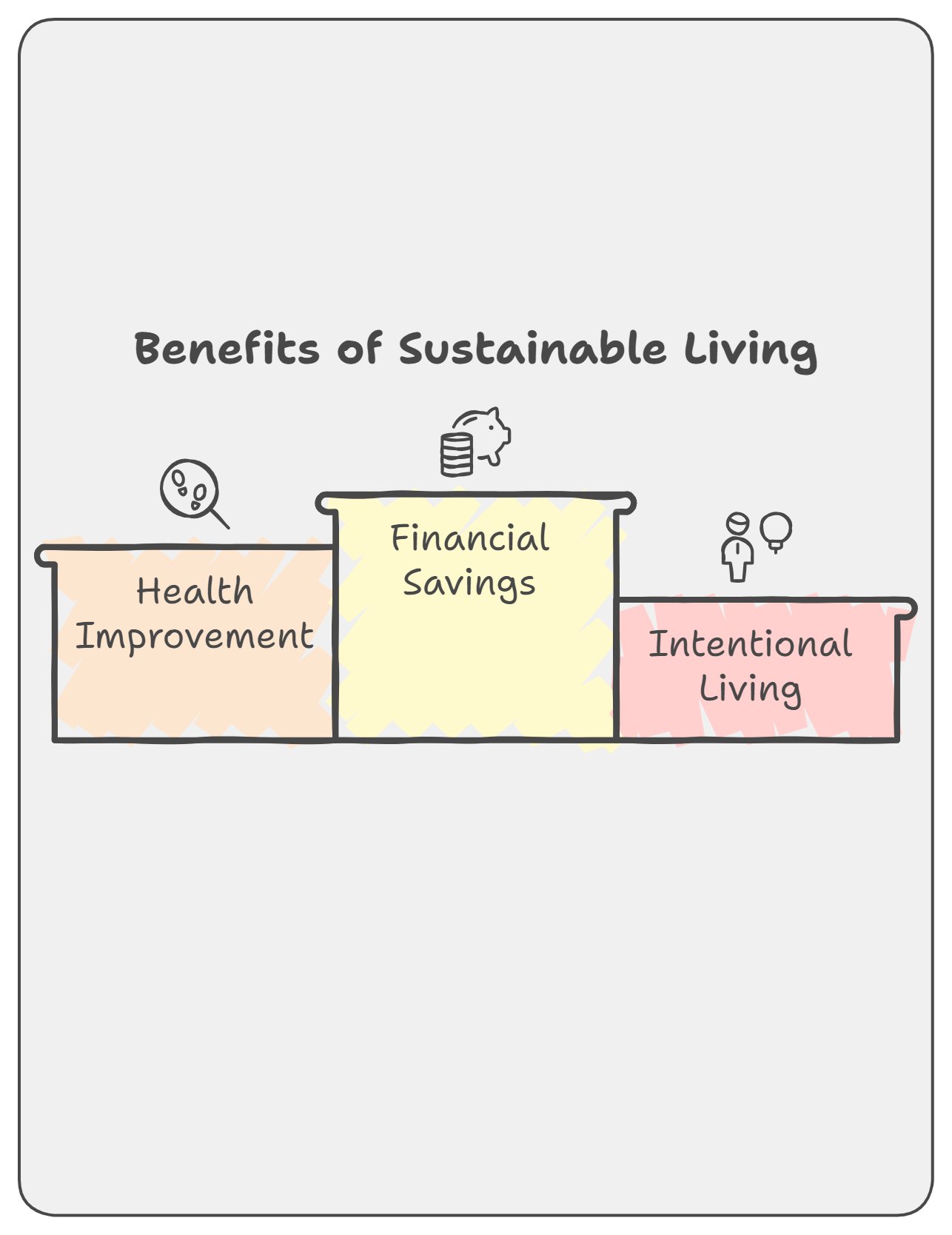
What is sustainable living? How Your Choices Shape a Sustainable Present and Future
By embracing sustainable living, we adopt practices that contribute to the well-being of the environment, society, and economy.

Sustainability is about living in a way that supports our current needs while safeguarding the resources and well-being of future generations. By choosing sustainable practices, we're helping the planet and enhancing our lives.
These choices create a healthier environment, a stronger economy, and a more resilient society. Importantly, we’re also preserving the resources that contribute to our wealth and well-being—ensuring future generations inherit a world where they can thrive, just as we have.
The often-overlooked bonus? Sustainability directly improves our quality of life. We save money, become healthier, and live with more intention—all while knowing we’re contributing to something bigger than ourselves. Going green is an investment in our future and well-being.
Sustainable living isn’t just about protecting the environment—it’s about improving your quality of life while saving money. By making small changes in your daily habits, you can significantly reduce expenses and contribute to a healthier community and planet. Here’s how:
Energy Efficiency
One of the easiest ways to save money and live sustainably is by improving energy efficiency at home. Switching to LED bulbs, unplugging devices when not in use, and installing energy-efficient appliances can lower your electricity bill. Even simple adjustments like turning down your thermostat by a couple of degrees or using natural sunlight can make a noticeable difference.
Cost savings: With efficient appliances and lighting households can save up to 20% on their energy bills. For instance, LED bulbs use 75% less energy than traditional incandescent bulbs, lasting up to 25 times longer.
Reducing Waste
Did you know that reducing waste is a win-win for your wallet and the planet? Instead of relying on single-use plastics, invest in reusable containers, water bottles, and shopping bags. Cutting down on food waste is another way to save. Plan meals, freeze leftovers, and compost organic waste to stretch your food budget further.
Cost savings: By reducing food waste, the average family could save around $1,500 a year. Investing in reusable items also pays off quickly, reducing the need to buy disposable products.

Photo by Ron Lach: https://www.pexels.com/photo/woman-throwing-eggs-in-the-trash-8466646/
Sustainable Transportation
Transportation can be a huge drain on finances, but eco-friendly options are often cheaper. Biking, walking, or carpooling reduce your carbon footprint and save on fuel and maintenance costs. If public transportation is available, it’s often more affordable than owning a car.
Cost savings: According to studies, people who bike to work save around $3,000 a year on fuel, parking, and vehicle maintenance. Public transport, depending on the area, can cost significantly less than maintaining a car.

Photo by Kevin Bidwell: https://www.pexels.com/photo/man-working-under-his-car-1388278/
Eco-Friendly Home Improvements
Investing in sustainable home upgrades may require an initial investment, but the long-term savings are undeniable. Adding insulation, installing solar panels, or weatherproofing your home cuts energy use and lowers heating and cooling costs. Even small changes like using energy-efficient windows or door seals can make your home more sustainable.
Cost savings: Proper insulation can reduce heating costs by up to 30%, and switching to solar energy could save you thousands of dollars in the long run, thanks to lower utility bills and potential government incentives.
Sustainable Food Choices
Buying local and seasonal food isn’t just a way to support the environment—it’s often more affordable. Organic food can be more expensive, but by growing your herbs or vegetables, or shopping at farmers markets, you can save on grocery bills while reducing your food’s carbon footprint.
Cost savings: Home-grown food costs a fraction of store-bought produce, and seasonal food is typically cheaper because it’s more abundant and doesn’t need to be shipped long distances.

Photo by Jane Trang Doan: https://www.pexels.com/photo/bowl-of-vegetable-salad-and-sliced-fruits-936611/
Water Conservation
Water is a precious resource, and conserving it helps the planet and your bank account. Installing water-saving showerheads, fixing leaks, and using a rainwater collection system for your garden are all effective ways to cut costs.
Cost savings: The average household can save around 10-15% on water bills using water-efficient appliances and fixtures. Collecting rainwater for gardening can further reduce your utility expenses.
Reducing Fast Fashion
Fast fashion may seem affordable, but its costs add up over time. Instead of buying cheap, low-quality clothing that wears out quickly, invest in durable, sustainable pieces that last longer. Thrift shopping and clothing swaps are also great ways to refresh your wardrobe without breaking the bank.
Cost savings: Sustainable clothing may have a higher upfront cost but lasts much longer. Thrifting and swapping can save hundreds of dollars annually.
By making these small changes, you can start living a more sustainable lifestyle that benefits the environment and keeps more money in your pocket. Whether you save on energy, cut food waste, or opt for more efficient transportation, the long-term rewards of sustainability are well worth the effort.


By embracing sustainable living, we adopt practices that contribute to the well-being of the environment, society, and economy.

Sustainability goes beyond admiration; it is a commitment to maintaining the delicate balance between our species and the planet.

Dive into the world of traditional board games and discover their diverse health benefits. Explore expert insights on how these games contribute to well-being and mental acuity.

Natural deodorant is an effective and environmentally friendly product. It is a healthy option since traditional antiperspirants often contain chemicals.

Let’s discover the environmental impact of household waste, and hopefully, this will inspire us to create a new mindset.
Welcome to Sustainable Living by Science. With our scientific mindset, we are exploring how to nurture our well-being while caring for the environment. We are sharing the meaning of sustainability through evidence-based practices. Join us on this journey towards a greener, healthier future where science guides us to make the best choices for ourselves, the planet, and others.
All content is © 2024 by Sustainable Living by Science. All rights reserved.